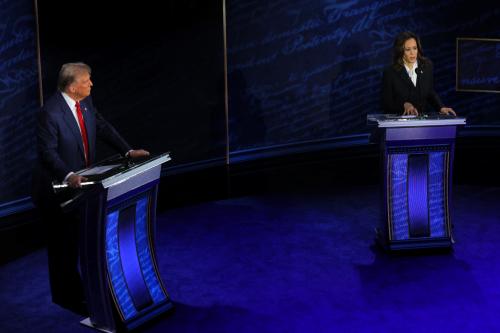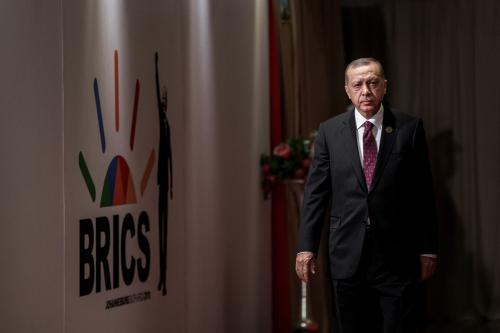Gen. Stanley McChrystal, the U.S. commander in Afghanistan, has come under fire for making public comments about the war. While answering questions after an Oct. 1 speech – in which he avoided taking sides in the policy debate – McChrystal challenged a popular alternative to the approach that President Obama sent him to Afghanistan to pursue. An op-ed on this page Saturday argued that a battlefield commander should not get ahead of his president in public. Next, national security adviser James L. Jones faulted McChrystal for speaking outside his internal chain of command while the president is reviewing his strategy and basic assumptions about the war.
Certainly, if given a do-over, McChrystal might make different, more nuanced statements; he was indeed too blunt and impolitic. But the criticism goes too far.
The Obama/McChrystal plan is classic counterinsurgency and focuses on protecting the Afghan population while strengthening Afghan security forces and government. McChrystal was asked about a “counterterrorism” strategy that would purportedly contain al-Qaeda with much lower numbers of American troops, casualties and other costs. McChrystal did not try to force the president’s hand on whether to increase the foreign troop presence in Afghanistan. The general critiqued an option that is at direct odds with Obama’s policy and conflicts with the experiences of the U.S. military this decade. That is not fundamentally out of line for a commander.
The past eight years have proven that a counterterrorism option for Afghanistan won’t hold the country together. This approach, the essence of the Rumsfeld “light footprint” concept that dominated most of the Bush presidency, led us to place most American troops in Afghanistan under a separate command from NATO because the Bush administration generally eschewed NATO’s peacekeeping mission. The counterterrorism operation was seen as the critical ongoing role for U.S. forces after the Taliban fell, but by last year its fruits were clear: a resurgent Taliban movement operating effectively in 140 of Afghanistan’s 368 districts; a tenfold increase in the rate of NATO casualties; an al-Qaeda leadership in western Pakistan swearing allegiance to the Afghan Taliban and probably hoping to reestablish a sanctuary in Afghanistan. All of this is laid out in a strategic assessment by McChrystal that has drawn no public faulting. Yet the counterterrorism option that gave us this mess is to be taken seriously?
Perhaps it is acceptable that we consider again abandoning Afghanistan to the Taliban and related movements, and trying to limit al-Qaeda’s future role there with long-range airstrikes or the occasional commando raid. But if so, let’s not pretend that Afghanistan will remain intact. The essence of McChrystal’s comment last week was that if we scale back dramatically as envisioned by the counterterrorism approach, Afghanistan would become “Chaos-istan” again. That comment is almost unassailable as far as it goes.
And McChrystal understated his case. The counterterrorism option would probably also fail to kill and capture terrorists; even its immediate goals are likely to be unattainable. As my colleague Bruce Riedel and I, among others, have argued, a counterterrorism option would lead to a loss of crucial human intelligence networks; once NATO forces drew down, the Kabul government would probably fall, and the resurgent insurgents would take revenge on those previously associated with us. Air bases from which we fly unmanned vehicles today over western Pakistan would also be lost, meaning that remote strikes would have to come from ships several hundred miles away. Pakistan’s interest in restraining the Afghan Taliban would probably diminish, as it would rather see that group back in power than an India-friendly regime in Kabul.
Some might agree with all this yet say that McChrystal still had no business wading into policy waters at this moment. It is true that commanders, as a rule, should not do so. But when truly bad ideas or those already tried and discredited are debated as serious proposals, they do not deserve intellectual sanctuary. McChrystal is personally responsible for the lives of 100,000 NATO troops who are suffering severe losses partially as a result of eight years of a failed counterterrorism strategy under a different name. He has a right to speak if a policy debate becomes too removed from reality. Put another way, we need to hear from him because he understands this reality far better than most in Washington.
Many of those criticizing McChrystal wish, in retrospect, that our military command in 2002-03 had been more vocal in opposing Donald Rumsfeld’s planning for the Iraq invasion that assumed a minimal need for post-invasion stabilization forces. This was an unusually bad idea that military leadership went along with, at least publicly, partly out of a sense that they had no prerogative to intercede. The result was one of the most botched operations in U.S. military history until the 2007 surge partially salvaged things.
President Obama has to weigh many complex matters as he assesses Afghanistan, including whether the United States can really redouble its efforts when the Afghan government is falling short on so many fronts. A lesson of Vietnam is that we cannot succeed in this kind of war without a viable domestic partner. Figuring out how to promote a stronger Afghan government that is more accountable to its people, and better placed to defeat the resistance, is critical. But the counterterrorism option is not a viable way to help stabilize Afghanistan. Because Obama called Afghanistan “a necessary war” seven weeks ago, it would have verged on professional malpractice for McChrystal to pretend otherwise.



Commentary
Op-edGen. Stanley McChrystal: A General Within Bounds in Afghanistan
October 6, 2009